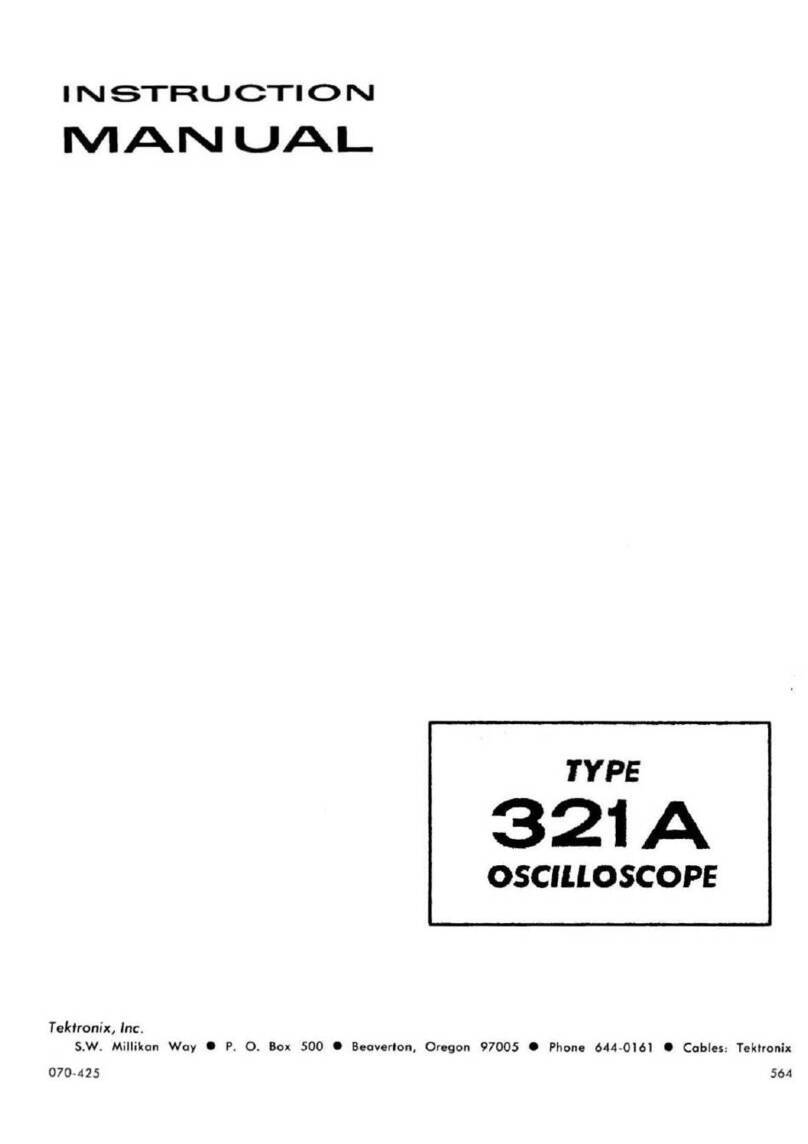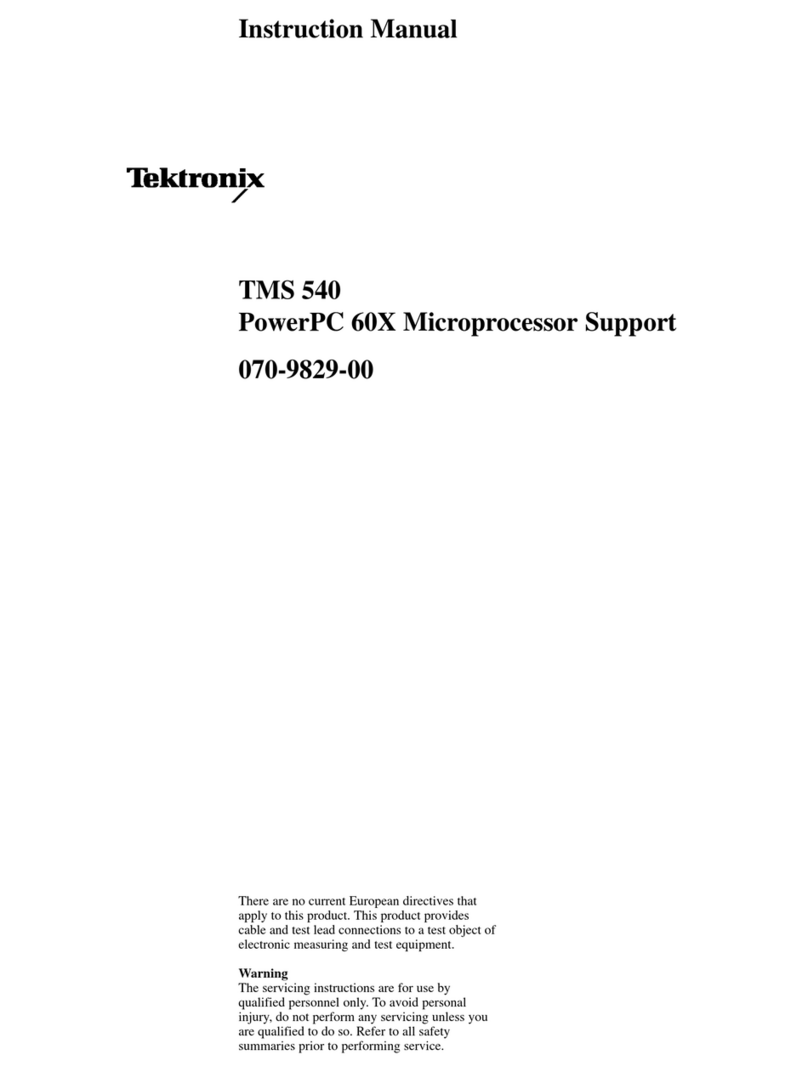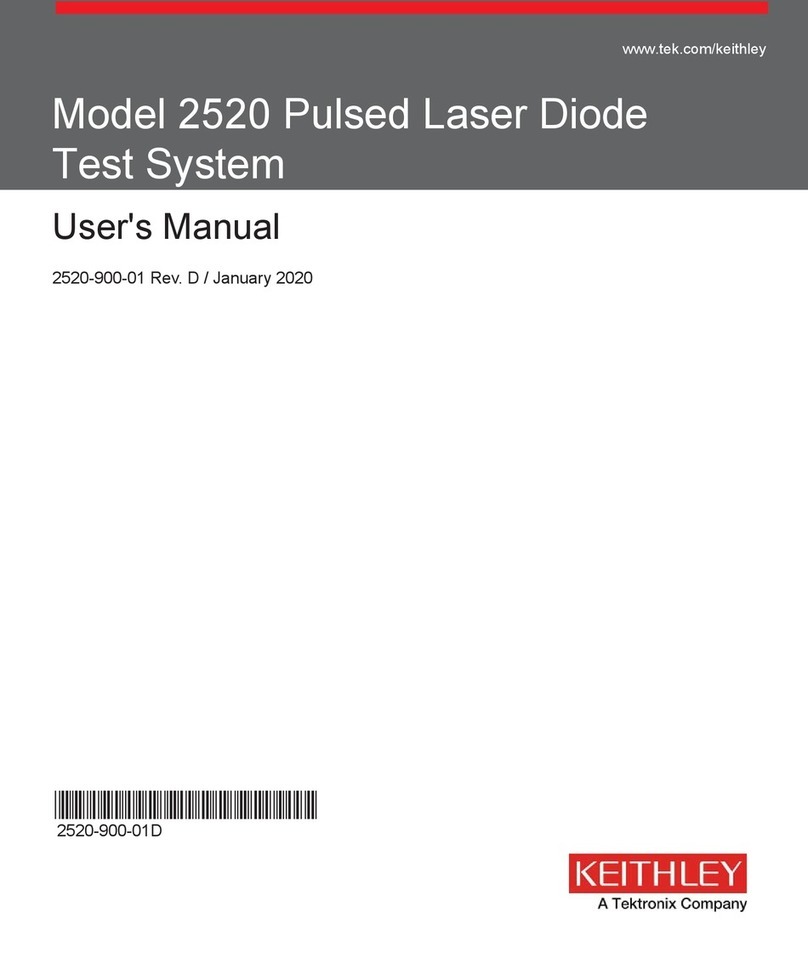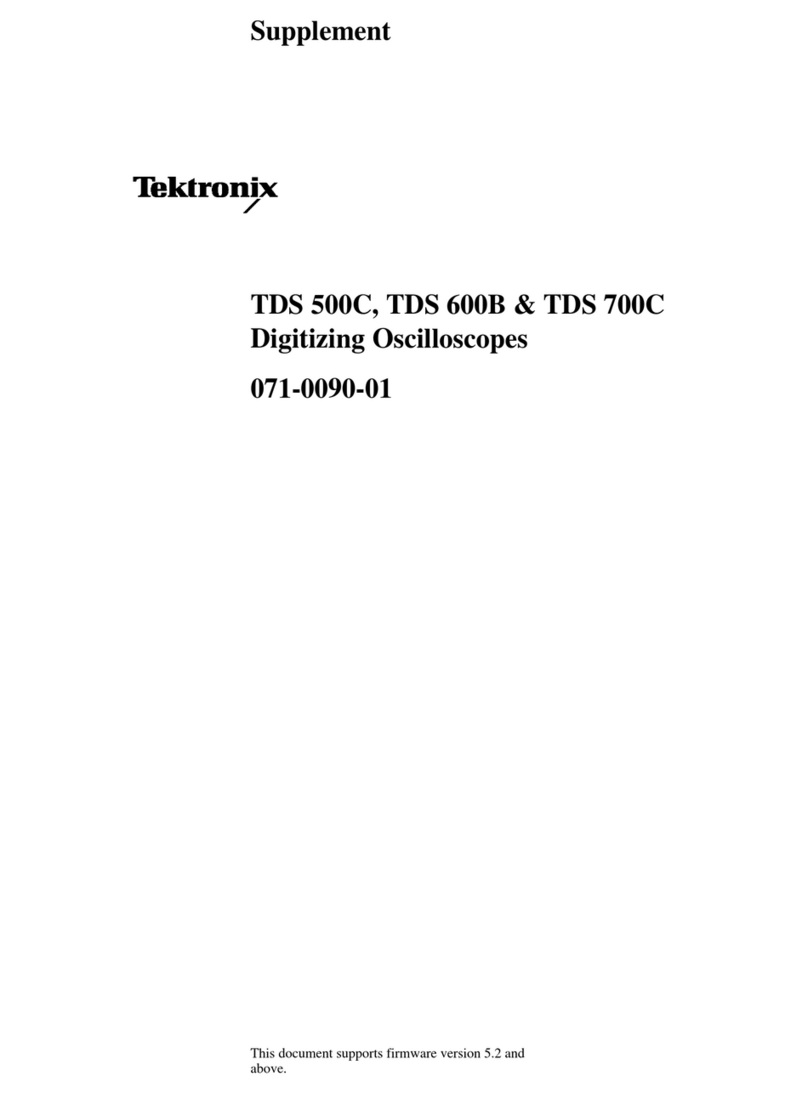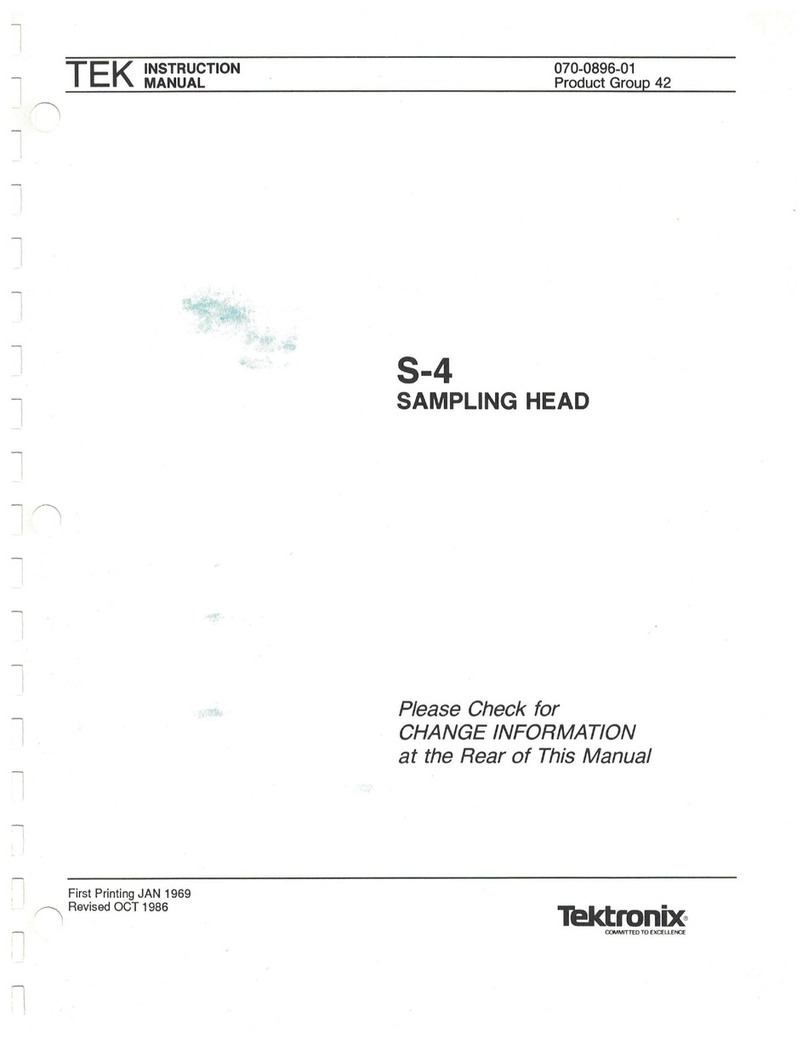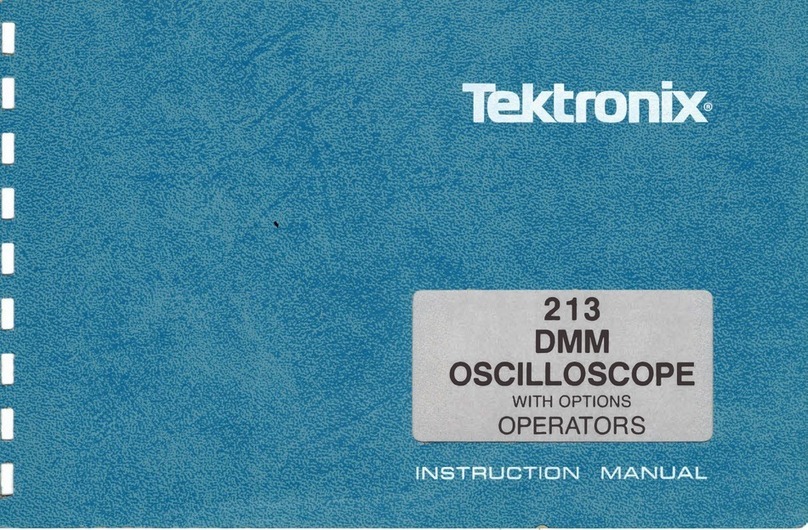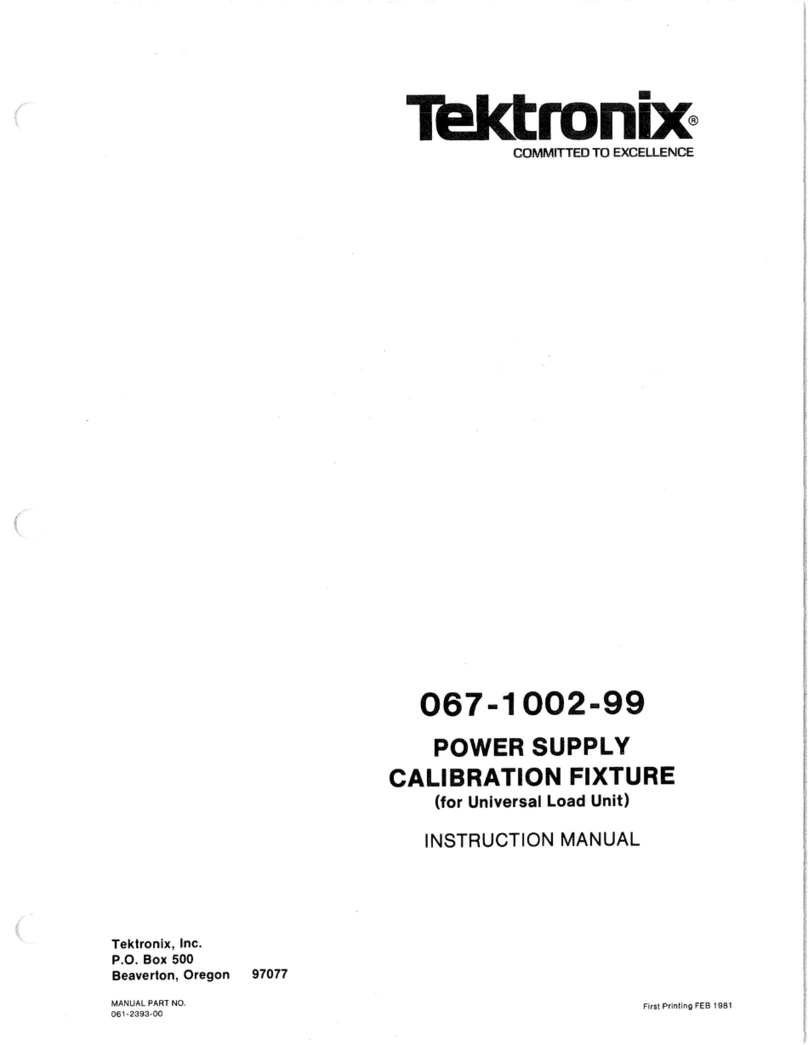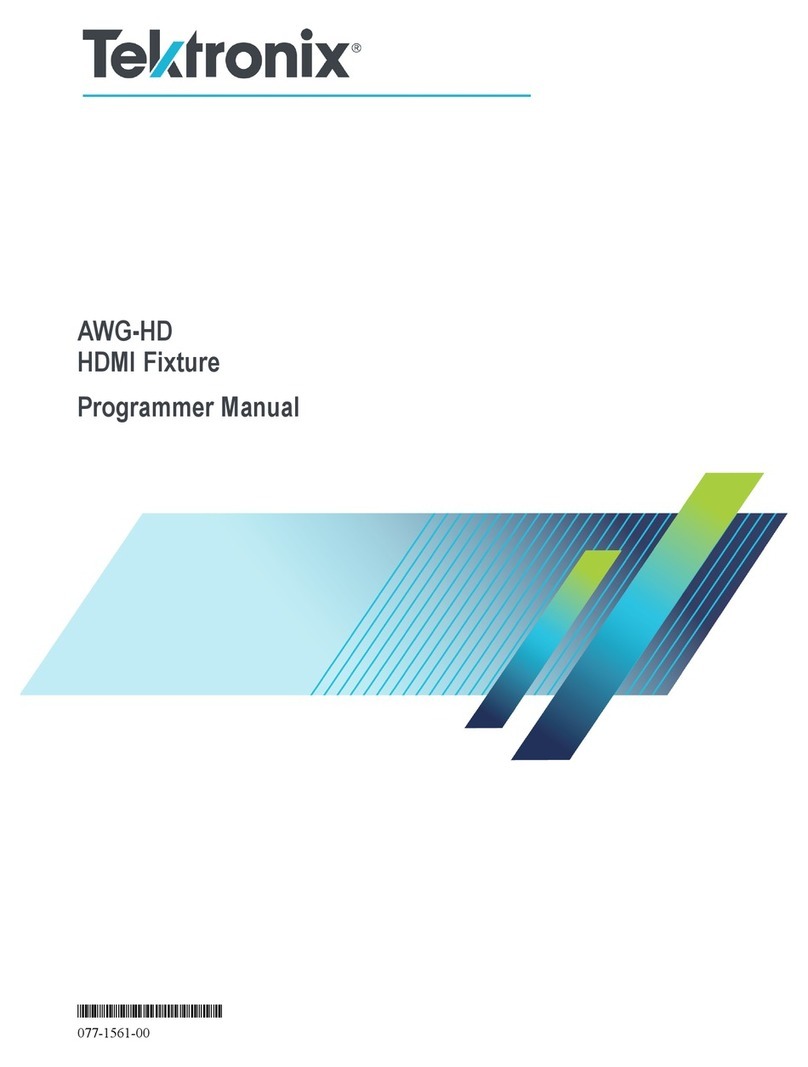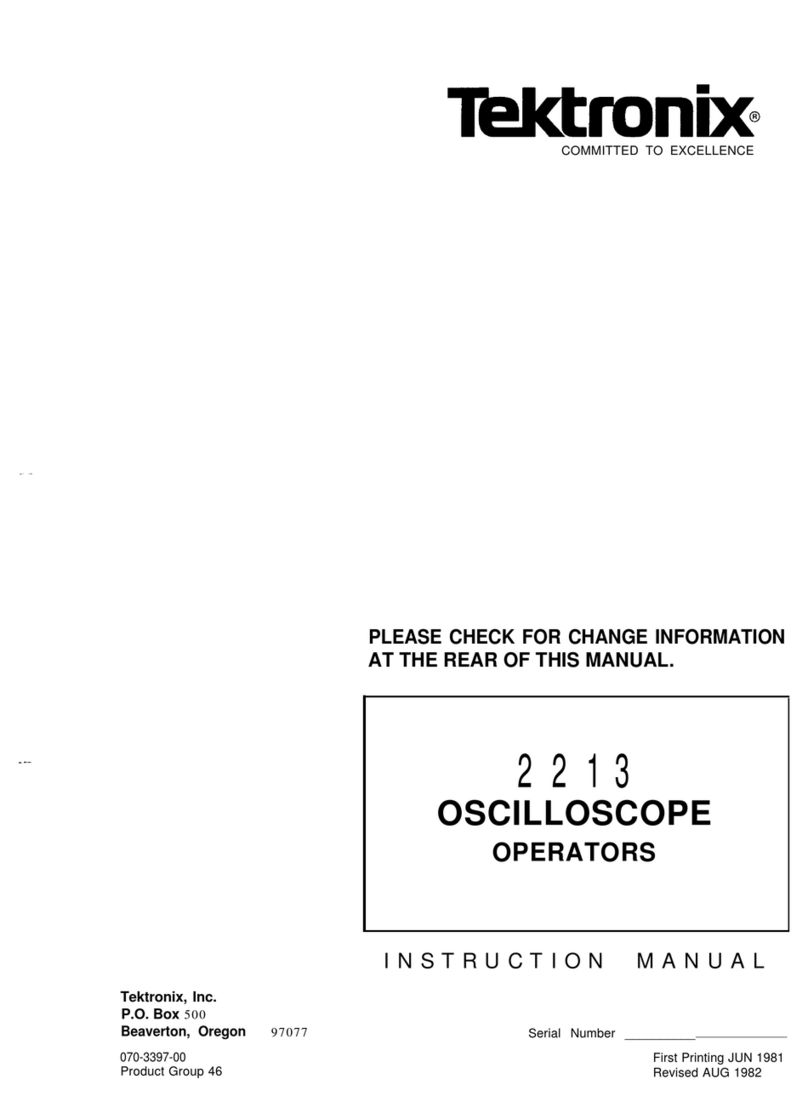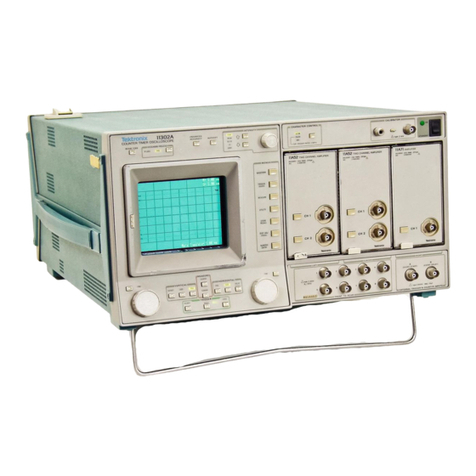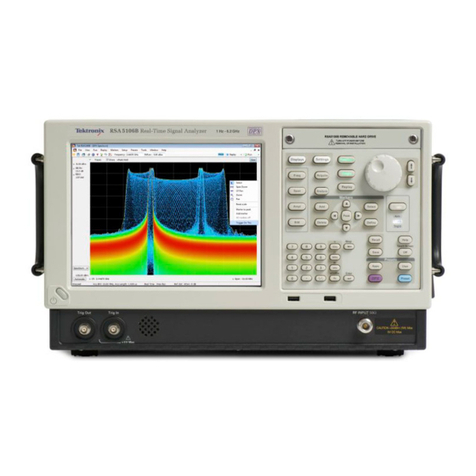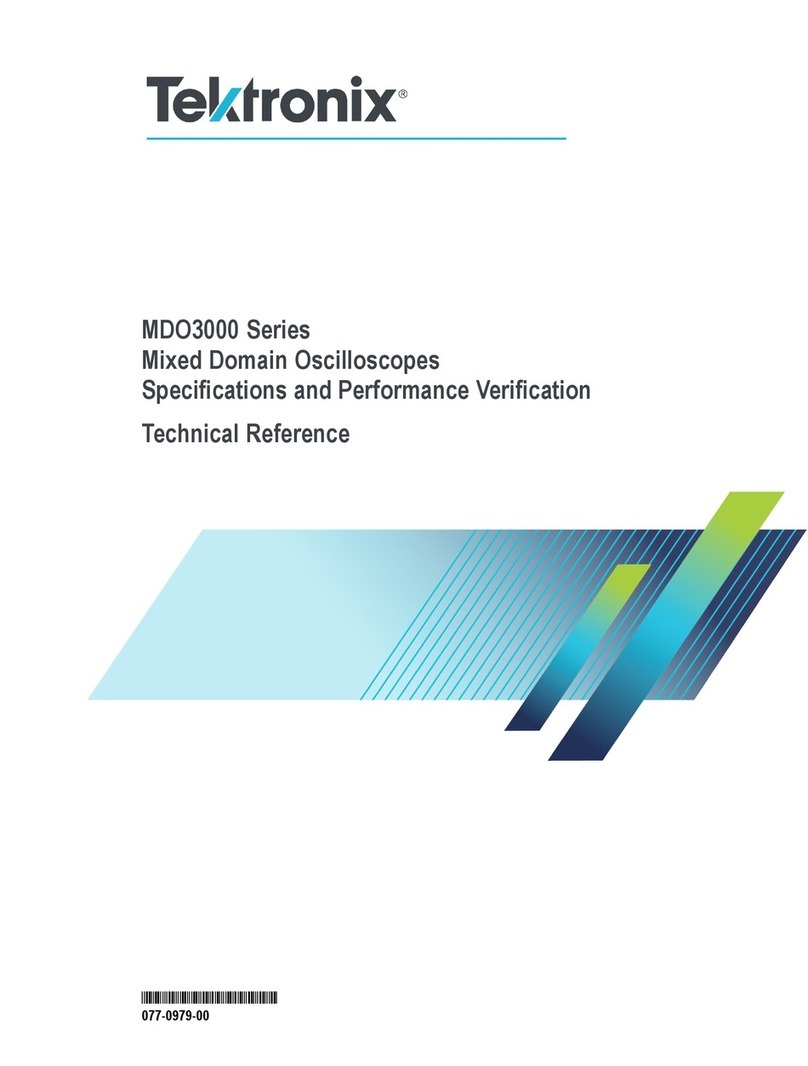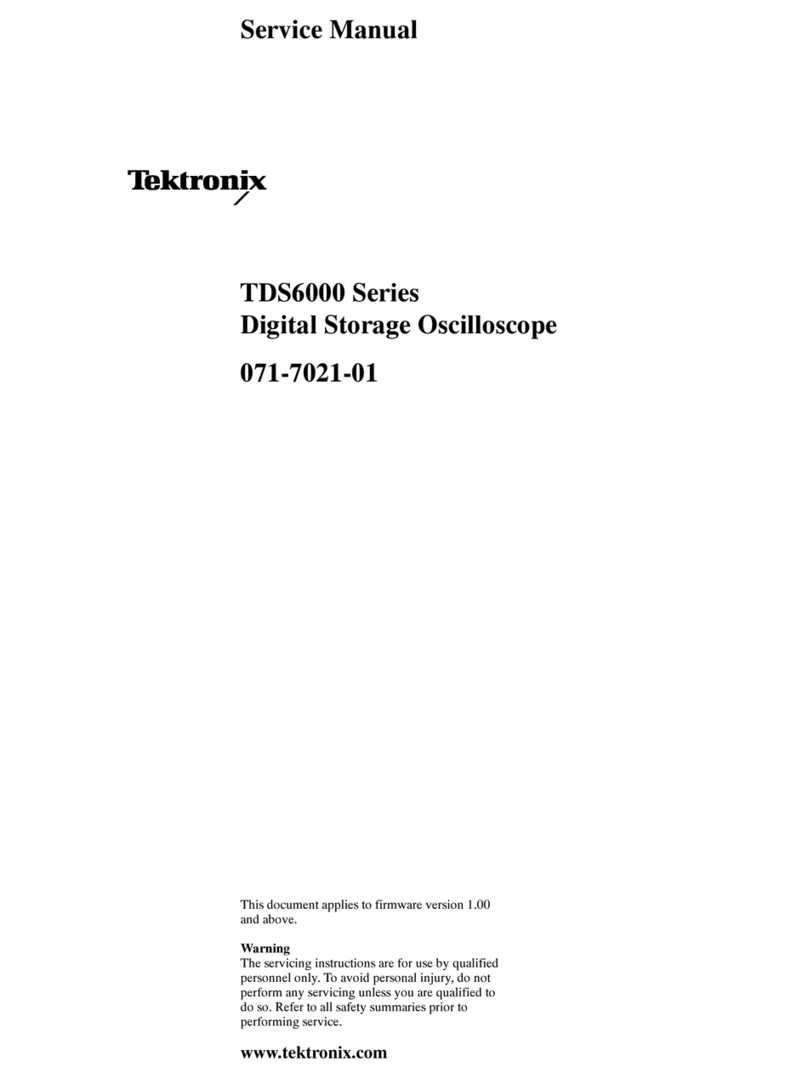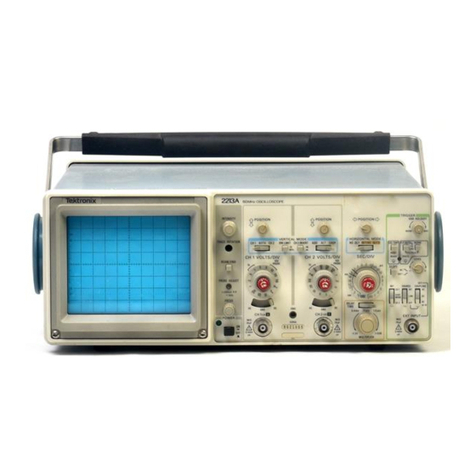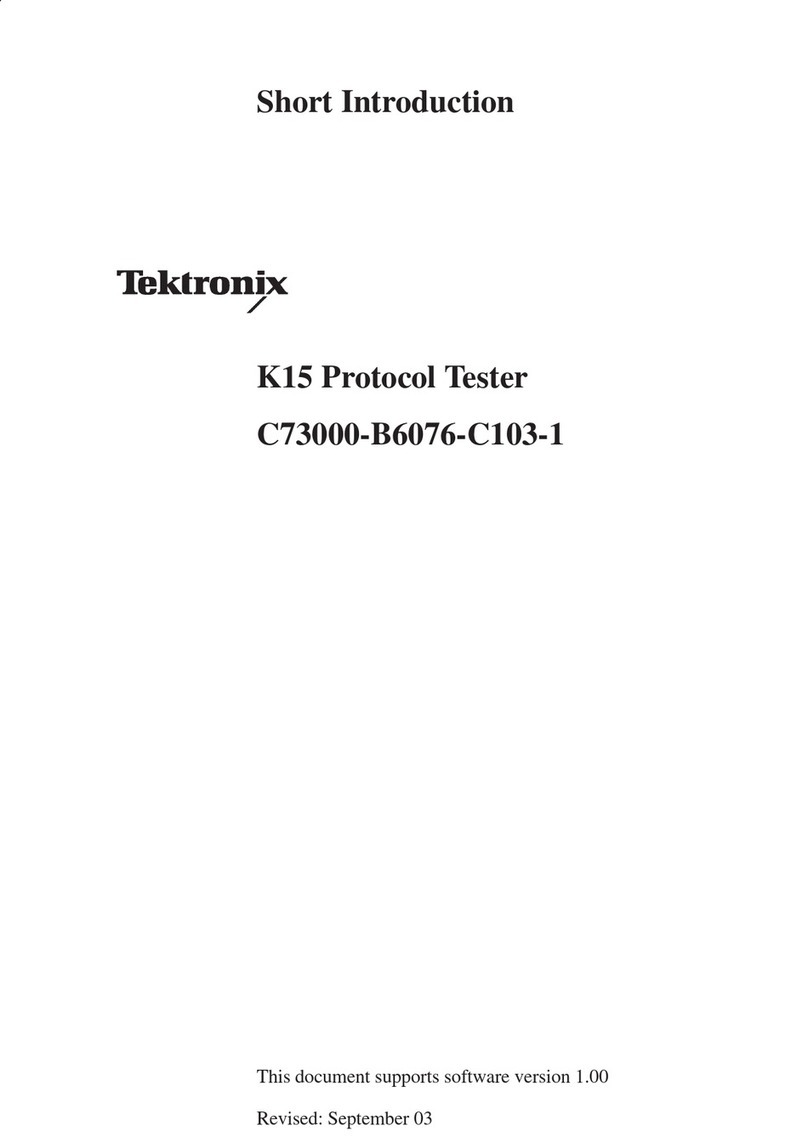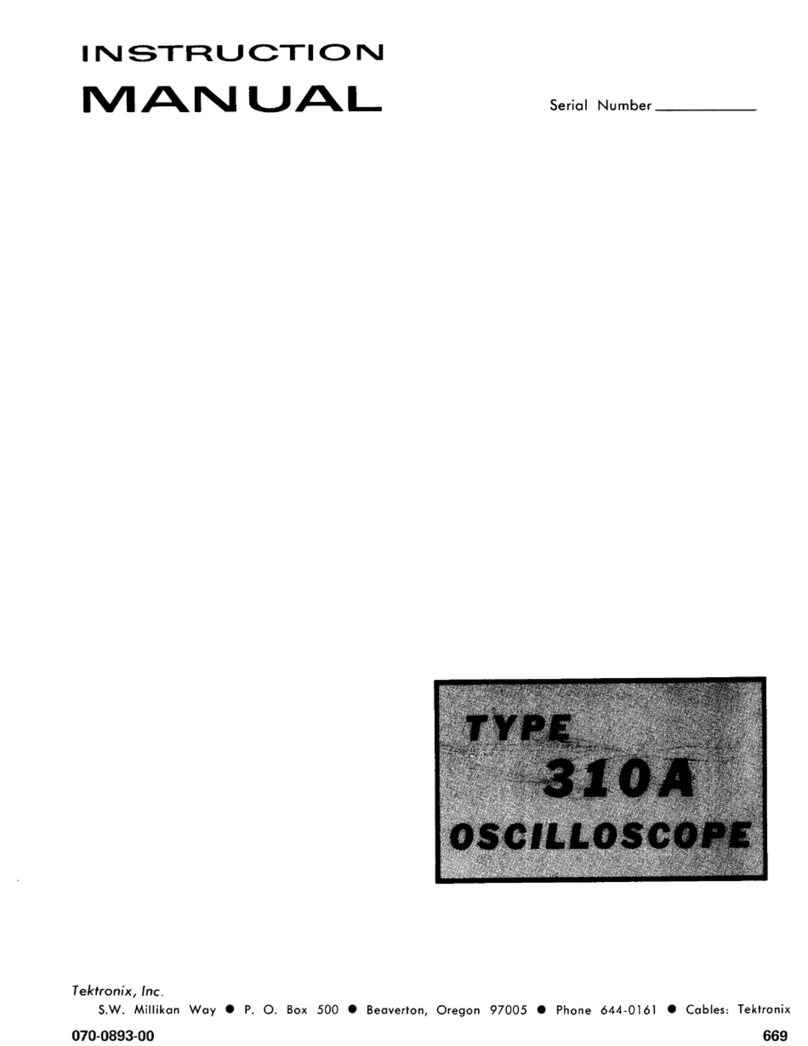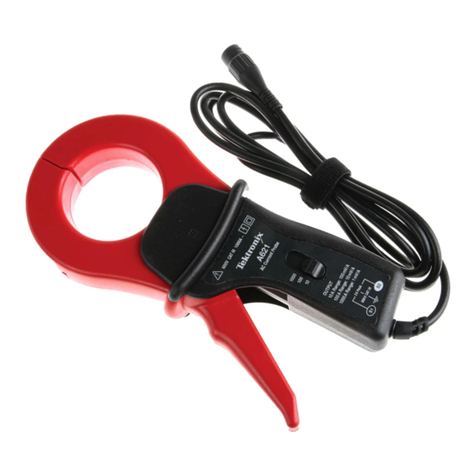
xx
Contacting Tektronix
Tektronix, Inc., 14150 SW Karl Braun Drive, P.O. Box 500,
Beaverton, OR 97077, USA
For product information, sales, service, and technical support:
In North America, call 1-800-833-9200.
Worldwide, visit www.tek.com to find contacts in your area.
Important safety information
This manual contains information and warnings that must be
followed by the user for safe operation and to keep the product
in a safe condition. To safely perform service on this product,
additional information is provided at the end of this section.
General safety summary
Use the product only as specified. Review the following safety
precautions to avoid injury and prevent damage to this product
or any products connected to it. Carefully read all instructions.
Retain these instructions for future reference.
Comply with local and national safety codes.
For correct and safe operation of the product, it is essential that
you follow generally accepted safety procedures in addition to
the safety precautions specified in this manual.
The product is designed to be used by trained personnel only.
Only qualified personnel who are aware of the hazards involved
should remove the cover for repair, maintenance, or adjustment.
Before use, always check the product with a known source to
be sure it is operating correctly.
This product is not intended for detection of hazardous voltages.
Use personal protective equipment to prevent shock and arc
blast injury where hazardous live conductors are exposed.
While using this product, you may need to access other parts
of a larger system. Read the safety sections of the other
component manuals for warnings and cautions related to
operating the system.
When incorporating this equipment into a system, the safety of
that system is the responsibility of the assembler of the system.
To avoid fire or personal injury
Use proper power cord. Use only the power cord specified for
this product and certified for the country of use.
Do not use the provided power cord for other products.
Ground the product. This product is grounded through the
grounding conductor of the power cord. To avoid electric
shock, the grounding conductor must be connected to earth
ground. Before making connections to the input or output
terminals of the product, ensure that the product is properly
grounded.
Do not disable the power cord grounding connection.
Ground-referenced oscilloscope use. Do not float the reference
lead of a TPP-series probe when using with the TBS1102X
oscilloscope. The reference lead must be connected to earth
potential (0 V).
Power disconnect. The power cord disconnects the product
from the power source. See instructions for the location. Do
not position the equipment so that it is difficult to access the
power cord; it must remain accessible to the user at all times to
allow for quick disconnection if needed.
Connect and disconnect properly. Do not connect or disconnect
probes or test leads while they are connected to a voltage
source.
Use only insulated voltage probes, test leads, and adapters
supplied with the product, or indicated by Tektronix to be
suitable for the product.
Observe all terminal ratings. To avoid fire or shock hazard,
observe all ratings and markings on the product. Consult the
product manual for further ratings information before making
connections to the product. Do not exceed the Measurement
Category (CAT) rating and voltage or current rating of the
lowest rated individual component of a product, probe, or
accessory. Use caution when using 1:1 test leads because the
probe tip voltage is directly transmitted to the product.
Do not apply a potential to any terminal, including the common
terminal, that exceeds the maximum rating of that terminal.
Do not float the common terminal above the rated voltage for
that terminal.
Do not operate without covers. Do not operate this product with
covers or panels removed, or with the case open. Hazardous
voltage exposure is possible.
Avoid exposed circuitry. Do not touch exposed connections
and components when power is present.
Do not operate with suspected failures. If you suspect that
there is damage to this product, have it inspected by qualified
service personnel.
Disable the product if it is damaged, Do not use the product if it
is damaged or operates incorrectly. If in doubt about safety of
the product, turn it off and disconnect the power cord. Clearly
mark the product to prevent its further operation.
Before use, inspect voltage probes, test leads, and accessories
for mechanical damage and replace when damaged. Do not use
probes or test leads if they are damaged, if there is exposed
metal, or if a wear indicator shows.
Examine the exterior of the product before you use it. Look
for cracks or missing pieces.
Use only specified replacement parts.
Do not operate in wet/damp conditions. Be aware that
condensation may occur if a unit is moved from a cold to a
warm environment.
Do not operate in an explosive atmosphere.
Keep product surfaces clean and dry. Remove the input signals
before you clean the product.
Provide proper ventilation. To ensure proper cooling, keep the
sides and rear of the instrument clear of obstructions. Slots
and openings are provided for ventilation and should never
be covered or otherwise obstructed. Do not push objects into
any of the openings.
Provide a safe working environment. Always place the product
in a location convenient for viewing the display and indicators.
Avoid improper or prolonged use of button pads. Be sure your
work area meets applicable ergonomic standards.
Probes and test leads
Before connecting probes or test leads, connect the power cord
from the power connector to a properly grounded power outlet.
Keep fingers behind the finger guards on the probes.
Remove all probes, test leads and accessories that are not in use.
Use only correct Measurement Category (CAT), voltage,
temperature, altitude, and amperage rated probes, test leads,
and adapters for any measurement.
Beware of high voltages. Understand the voltage ratings for
the probe you are using and do not exceed those ratings. Two
ratings are important to know and understand:
The maximum measurement voltage from the probe tip
to the probe reference lead
The maximum floating voltage from the probe reference
lead to earth ground
These two voltage ratings depend on the probe and your
application. Refer to the Specifications section of the manual
for more information.
WARNING. To prevent electrical shock, do not exceed the
maximum measurement or maximum floating voltage for
the oscilloscope input BNC connector, probe tip, or probe
reference lead.
Connect and disconnect properly. Connect the probe output
to the measurement product before connecting the probe
to the circuit under test. Connect the probe reference lead
to the circuit under test before connecting the probe input.
Disconnect the probe input and the probe reference lead from
the circuit under test before disconnecting the probe from the
measurement product.
Connect and disconnect properly. De-energize the circuit under
test before connecting or disconnecting the current probe.
Connect the probe reference lead to earth ground only.
Do not connect a current probe to any wire that carries voltages
above the current probe voltage rating.
Inspect the probe and accessories. Before each use, inspect
probe and accessories for damage (cuts, tears, or defects in
the probe body, accessories, or cable jacket). Do not use if
damaged.
Service safety summary
The Service safety summary section contains additional
information required to safely perform service on the product.
Only qualified personnel should perform service procedures.
Read this Service safety summary and the General safety
summary before performing any service procedures.
To avoid electric shock. Do not touch exposed connections.
Do not service alone. Do not perform internal service or
adjustments of this product unless another person capable of
rendering first aid and resuscitation is present.
Disconnect power. To avoid electric shock, switch off the
product power and disconnect the power cord from the mains
power before removing any covers or panels, or opening the
case for servicing.
Use care when servicing with power on. Dangerous voltages
or currents may exist in this product. Disconnect power,
remove battery (if applicable), and disconnect test leads
before removing protective panels, soldering, or replacing
components.
Verify safety after repair. Always recheck ground continuity
and mains dielectric strength after performing a repair.
Terms in product manuals
These terms may appear in the product manuals:
WARNING. Warning statements identify conditions or
practices that could result in injury or loss of life.
CAUTION. Caution statements identify conditions or
practices that could result in damage to this product or
other property.
Symbols and terms on the product
These terms may appear on the product:
DANGER indicates an injury hazard immediately
accessible as you read the marking.
WARNING indicates an injury hazard not immediately
accessible as you read the marking.
CAUTION indicates a hazard to property including the
product.
When this symbol is marked on the product, be
sure to consult the manual to find out the nature of
the potential hazards and any actions which have
to be taken to avoid them. (This symbol may also
be used to refer the user to ratings in the manual.)
The following symbol(s) may appear on the product:
TBS1000X Series
Oscilloscopes Safety and
Installation
Instructions
x
*P071375700*
071-3757-00
1
